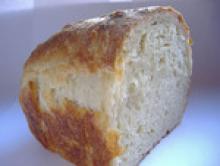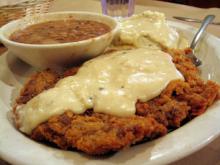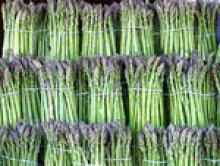Sprucing Up Simple Dishes
Sometimes we crave simplicity. Humble foods that are quick, easy and inexpensive have as much culinary power as complex, gourmet dishes. They're what we eat when we need to focus our energy elsewhere or when finances are too tight for more nuanced fare. These two-note dishes can be satisfying in their own right, but it doesn't take long to grow bored with them. This creates something of a dilemma. How do you make basic meals more interesting without sacrificing the simplicity that defines them? Here are a few ways to make those easy foods more lively while keeping them honest.
Macaroni and Cheese is a staple of childhood. It's fast, filling, fun and it pleases the undeveloped palates of growing kids. And hey, the sneaky serving of vital calcium doesn't hurt, either. For adults, mac and cheese gets relegated to the status of a sidedish, which never felt quite right to me. Equally unfitting is the way consummate foodies tend to turn this quintessentially humble dish into something expensive and pretentious. I can never bring myself to order, let alone cook, some baked combination of obscure cheeses, whole wheat macaroni, truffles and counter-intuitive spices. For a more homey mac and cheese upgrade, take a page out of Depression-era cuisine. Peas go surprisingly well with the dish, adding some extra body, texture and nutrition to the mix. Add some basic herbs like basil and some simple spice like black pepper for some additional flavor.
Cheese is a frequent fixture in simple food. Take the classic Grilled Cheese Sandwich. Now, I'm not suggesting that this beauty of an invention is anything less than perfect on its own, just that it deserves to be dressed up every now and then. It's easy enough to put a slice of bacon in the middle, but as much as I adore that most indulgent of meats, I think there's something a bit lazy about that. The grilled cheese sandwich has had a long-time companion in tomato soup, so why not employ the tomato elsewhere? A slice of a meaty hothouse can liven up the sandwich, or a light salsa could give it a southwestern kick. Other veggies, like roasted red pepper and zucchini, can also lend more flavor and substance to the sandwich. Don't go overboard, though. We're not trying to make a panini here.
One place where it is a good idea to go overboard is in a bowl of ramen noodles. The marketing people at Manchurian and Top Ramen would have us believe that all one needs for a complete ramen meal is some hot water and their flavor packets. To eat ramen as it was intended (and as the Japanese have been serving it for centuries), don't be bashful about treating it like goulash. Any spice, vegetable, egg or other random scraps could find their way into your pot of ramen noodles to make this dish into a full meal.
Don't be afraid to take humble favorite and turn them into something more substantial. With a little creativity and a sense of respect for the base dish, you can elevate even the most unassuming food to sublime cuisine.







